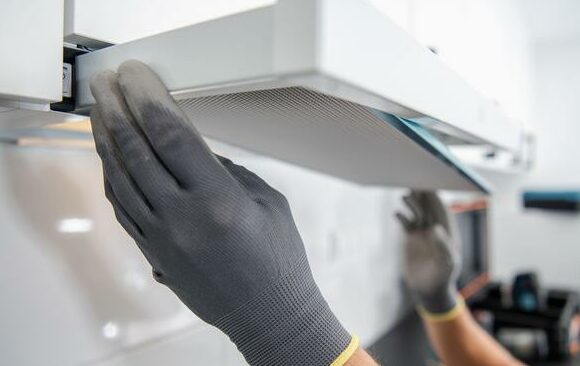Does your kitchen fan use more energy than other items in your home? If so, maybe it’s time to get rid of it and get something better.
Most kitchen fans are installed on the ceiling or near the floor. They extract air from the room through vents and send it outside. The problem is that sometimes these systems do not work well.
Many people install kitchen exhaust fans without knowing that they will save them money in the long run. Some models even reduce the amount of energy used. This means that you can get a new kitchen fan without spending more money.

Table of Contents
What Is the Power of The Exhaust Fans?
Exhaust fans are small fans that are placed in places like kitchens and bathrooms that do not have enough airflow to remove odors, fumes, and moisture from the air.
The amount of electricity that exhaust fans use depends on the duration of their operation, their size, the space they have to ventilate, and the additional features they have.
Compared to bathroom exhaust fans, kitchen exhaust fans are usually larger and more powerful. This is because they have to push hot air, odors, and even oil particles into the air. From the outside, it doesn’t look like it, but if you put your finger in a kitchen exhaust pipe, you will know what it has to go through.
Depending on the size and power of your exhaust fan, you can expect to pay between $0.85 and $23.52 per day if you use it all the time.
Repairing and maintaining your exhaust fans could be one of the most important costs you have to face. If you want to save money on your electricity bill but don’t want to turn off your exhaust fan, you can use it with a lower setting.
What Is the Difference Between Exhaust Fans and Ceiling Fans?
Exhaust fans and ceiling fans are the two most useful types of fans.
Ceiling fans and exhaust fans are the two most widely used types of fans in India. There are many ways in which ceiling fans and exhaust fans are different.
Why ceiling fans and exhaust fans are different: They look different. This is the most obvious difference between the two types of fans.
Electric ceiling fans are simple, round fans with blades. Exhaust fans, on the other hand, are rectangular or square.
Exhaust fans are placed on the upper corners of the walls, while ceiling fans are placed in the middle of the ceiling.
These are some of the main ways exhaust fans and ceiling fans are different.
How Much Power and Energy Does a Cooker Hood Use?
Here you can determine the amount of energy and energy used by an extractor hood. Depending on the speed at which it evacuates the air, a kitchen hood can use from 65 to 300 watts of power.
The amount of electricity used depends on the power and the duration of use. The average hood consumes 0.105 kWh of energy per hour.
For home use, kitchen exhaust fans can range from 40 watts to 90 watts, and for professional use they can range from 60 watts to 120 watts.
Depending on the amount of air it extracts, a typical kitchen hood uses from 65 to 300 watts of power and is used for about 4 hours a day.
For residential use, exhaust fans usually use between 5 and 35 watts, but commercial systems can use up to 60 watts.
High-efficiency basic ventilation units with a single fan can use as little as about 6 watts, while most standard units use 60 watts or more.
A standard bathroom extractor hood can use anywhere from about 4 watts to about 38 watts of power.
Let’s say your kitchen hood has a rated power of 300 W. In circulation mode, the kitchen hood does not work all day. On average, it works for about 4 hours, so the flow rate is 4 x 0.3 = 1.2 kW / per day.
Beware! We have determined the power that a 300-watt kitchen hood needs to work for 4 hours a day. If you use a kitchen hood of different power, the flow rate will change in the same way.
The comparison shows that a large kitchen hood is less powerful and does not work as well as a small inclined hood.
How Efficient Exhaust Fans Can Reduce Energy Consumption
Some of the energy is lost in the form of heat, and some exhaust fans permanently lose energy in the form of noise. In addition to the energy loss that all appliances have, one of the biggest problems with a traditional exhaust fan is that it works at the same level all the time.
When a fan is running, better-sealed bearings reduce friction, which means that less energy is lost in the form of heat.
During cooking, when pots or ovens release more steam into the air, the exhaust fan works harder to reduce the amount of moisture in the air and prevent condensation from forming in other parts of the house. When the cooking is finished, the amount of moisture in the food decreases, so the power level of the fan automatically decreases. This consumes less energy.
Traditional fans use filters to protect the fan blades, but a cyclone airflow through the fan eliminates the need for a filter because the air is moved through the system in a cleaner way.
